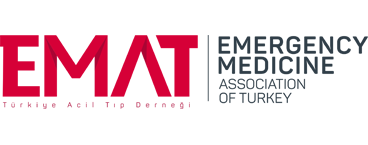Potential of deep learning in advancing electrocardiography arrhythmia diagnosis in emergency medicine
Can Berk Inan1 , Nurbanu Aksoy2
, Nurbanu Aksoy2 , Havva Şahin Kavaklı3,4
, Havva Şahin Kavaklı3,4 , Hülya Çiçekçioğlu5
, Hülya Çiçekçioğlu5 , Kerem Özbek5
, Kerem Özbek5 , Alp Şener3,4
, Alp Şener3,4
1Department of Emergency Medicine, Tokat Erbaa State Hospital, Tokat, United Kingdom
2Department of Computer Science, Faculty of Engineering and Physical Sciences, University of Leeds, Leeds, United Kingdom
3Department of Emergency Medicine, Ankara Bilkent City Hospital, Ankara, Türkiye
4Department of Emergency Medicine, Ankara Yildirim Beyazit University Faculty of Medicine, Ankara, Türkiye
5Department of Cardiology, Ministry of Health Ankara Bilkent City Hospital, Ankara, Türkiye
Keywords: Computational medicine, deep learning, electrocardiography interpretation, supraventricular tachycardia, ventricular tachycardia, wide complex tachycardia
Abstract
OBJECTIVES: Accurate differentiation between ventricular tachycardia (VT) and supraventricular tachycardia (SVT) with aberrant conduction in wide complex tachyarrhythmias (WCT) remains a significant challenge in emergency medicine. This study aimed to evaluate the efficacy of deep learning (DL) models, specifically pretrained residual network (ResNet) architectures, in classifying these arrhythmias using electrocardiography (ECG) data.
METHODS: A retrospective cross sectional study was conducted, analysing 652 WCT ECGs and 248 normal sinus rhythm ECGs from an emergency medicine clinic. Three ResNet models ResNet 18, ResNet 34, and ResNet 50 were fine tuned using transfer learning. Model performance was assessed via 10 fold cross validation, evaluating accuracy, sensitivity, and precision.
RESULTS: All ResNet models demonstrated high and consistent performance, achieving 95% accuracy, precision in distinguishing VT from SVT with aberrant conduction. The models exhibited robust generalization across validation folds.
CONCLUSION: DL models, particularly ResNet architectures, show promise in enhancing ECG based diagnosis of WCT. Their integration into emergency care could improve diagnostic accuracy, especially in settings with limited access to specialized cardiac expertise.
How to cite this article: Inan CB, Aksoy N, Kavaklı HŞ, Çiçekçioğlu H, Özbek K, Şener A. Potential of deep learning in advancing electrocardiography arrhythmia diagnosis in emergency medicine. Turk J Emerg Med 2025;25:288-96.
Ethical approval for this study was carried out following the approval decision numbered E2‑22‑2645, which was given on November 23, 2022, based on our application to the ethics committee number 2 of Ankara Bilkent City Hospital. Informed consent was not obtained from the patients due to retrospective design. The study was conducted in accordance with the principles of the World Medical Association Declaration of Helsinki.
CBI: Conceptualization (lead); Methodology (lead); Validation (lead); Formal analysis (lead); Investigation (lead); Resources (lead); Data curation (lead); Writing – Original draft (lead); Writing – Review and editing (equal); Visualisation (lead); Supervision (lead); Project administration (lead).
NA: Conceptualization (lead); Methodology (lead); Software (lead); Validation (lead); Formal analysis (lead); Investigation (lead); Resources (lead); Data curation (lead); Writing – Original draft (lead); Writing – Review and editing (equal); Visualization (lead).
HSK: Conceptualization (lead); Methodology (lead); Formal analysis (lead); Investigation (lead); Resources (lead); Writing – Review and editing (equal); Supervision (lead); Project administration (lead).
HC: Methodology (supporting); Formal analysis (supporting); Investigation (supporting); Resources (supporting); Writing – Review and editing (equal).
KO: Methodology (supporting); Formal analysis (supporting); Investigation (supporting); Resources (supporting); Writing – Review and editing (equal).
AS: Methodology (supporting); Validation (equal); Formal analysis (equal); Investigation (equal); Resources (equal); Data curation (equal); Writing – Review and editing (equal).
None Declared.
None.
We would like to thank Ahmet Murat Ozbayoglu, Abdussamet Turker, Erdem Gunt, Ahmet Aymaz and Ibrahim Dilekcan for their support and valuable contributions.

